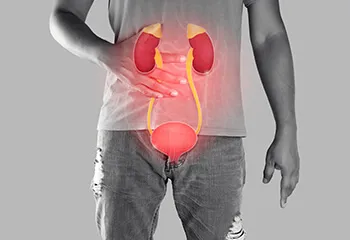Have Any Question or Urology Problem?
Schedule Consultation
Dr. Ashish Saini
Know Dr. Ashish Saini in Detail
Dr Ashish Saini is an exceptional and highly skilled genitourinary surgeon(urologist) whose capabilities in the operating room are truly commendable. Dr Ashish Saini did his MBBS, MS from King George Medical College (KGMC), and he completed his M.Ch in Urology from All India Medical Sciences (AIIMS) New Delhi. Known for his meticulous attention to detail, Dr Ashish Saini with 15 + years of experience approaches each surgical case with a thorough understanding of the patient’s unique needs and tailors his approach accordingly. Dr Ashish Saini has completed 21000+ Urology and Sexology Surgeries. Beyond his surgical skills, Dr Saini fosters a sense of trust and reassurance among his patients. His clear communication, both pre-and post-surgery, helps the patient feel informed and at ease throughout their medical journey. Dr Ashish Saini’s commitment to patient-centred care contributes to a positive overall experience for those under his supervision.
Meet Dr. SainiBreaking Records Every Day
Most Trusted Urologist in Delhi NCR
Dr. Ashish Saini has performed an impressive number of surgeries, showcasing his expertise and dedication in the field. With a remarkable track record, he has successfully completed thousands of surgeries, bringing hope and healing to countless patients.
0
Infertility Treatments
0
Erectile Dysfunctions Treatments
0
Laser Kidney Stones Removal Surgery
0
Enlarged Prostate Treatments
Dr Ashish Saini also provides tailored solutions for men's health concerns, ensuring personalized and effective treatments. Restoring confidence and well-being, Dr. Saini is your reliable partner on the path to better health.
Learn More About Andrology Treatment
Contact Dr Saini for Male Health Concerns
Schedule ConsultationUrology & Andrology Treatments That
Dr Ashish Saini Offer
Condition that Dr Saini Treats
Why Choose Dr Saini for Urology & Andrology Treatments in Delhi
Excel Advanced Urology Centre has a specialized team led by senior urologist Dr Ashish Saini who has performed numerous RIRS surgeries that significantly enhance the success rates and safety of the procedure.
Schedule Consultation



















